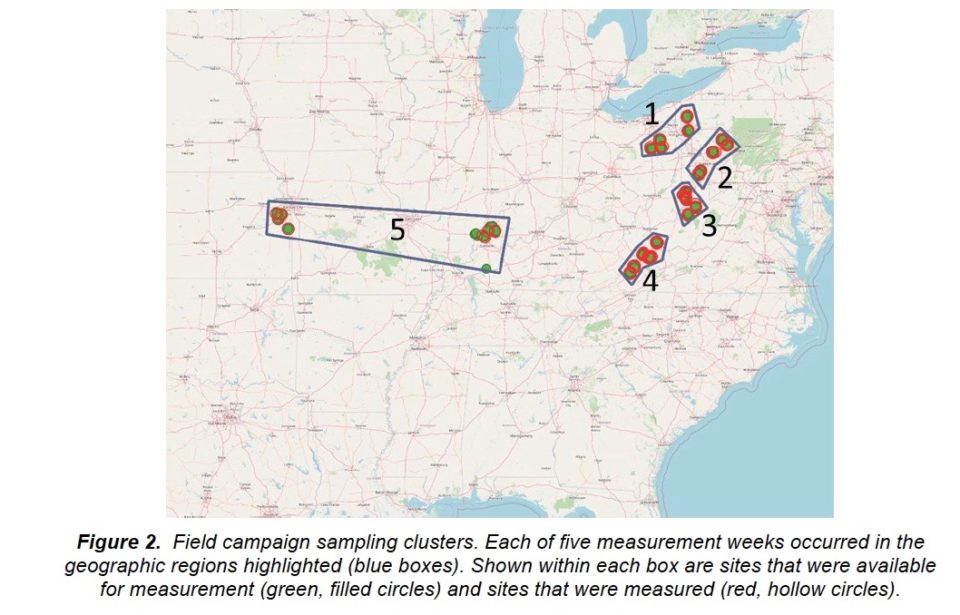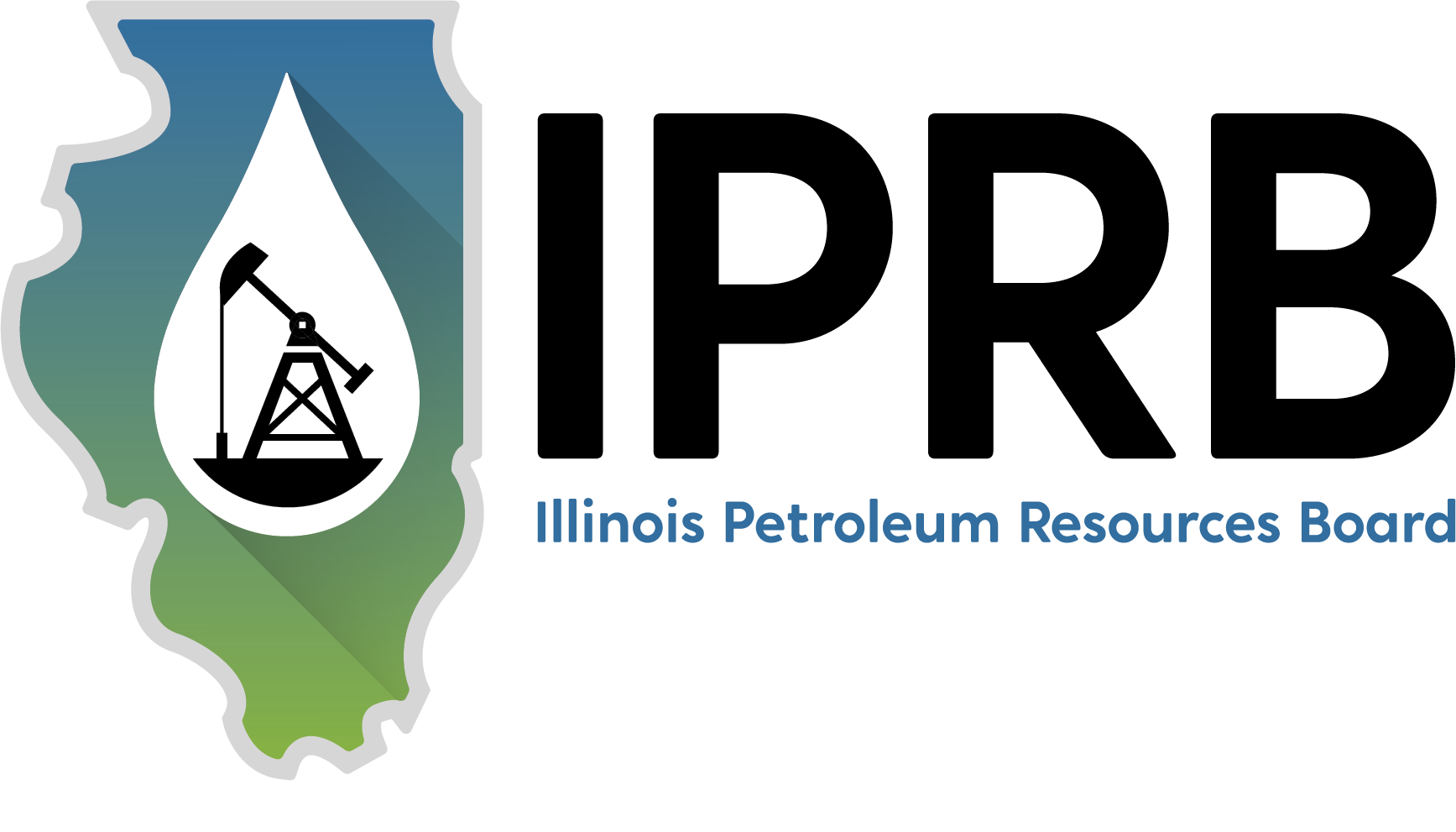Draft DOE Study Indicates Illinois Basin Oil Production Methane Emissions Are Negligible
Preliminary results from a long-awaited U.S. Department of Energy marginal well methane emissions study have been released, and they confirm what even the Obama-era EPA acknowledged back in 2015: methane emissions from marginal production sites are “inherently low.”
The draft report – which was commissioned to fill a gaping data gap for wells that produce 15 barrels of less of oil per day or 90,000 cubic feet or less of natural gas per day – includes full results from first field campaign of the study, which included Illinois Basin marginal oil production sites. The Illinois Basin portion of the study is identified on the right side of the area labeled “5” on the following map featured in the draft report (view two-page summary here).

Among the most notable takeaways from that field campaign that included the Illinois Basin were:
- 75 percent of the 87 oil sites evaluated had no detected emissions at all
- 90 percent of observed emissions were less than 13 standard cubic feet per hour
- 90 percent of emissions detected were from 12 percent of the sites
- Two sites – an oil well that had a sucker rod packing issue on its pump jack (137 scfh) and a natural gas well with an open hole in the wellhead casing (156 scfh) – accounted for 40 percent of the overall emissions detected
It should be emphasized that the results are preliminary and the final report, which has been delayed by the COVID-19 pandemic, is slated to be released in September 2021. However, the Illinois Basin field study portion of the report is complete, with the data presented in the draft version of the report providing the most definitive methane emissions profile of the Illinois Basin to date. And that profile shows methane emissions from the Illinois Basin are negligible. The following graphic summarizes the oil production site findings from the field campaign that included the Illinois Basin.

With regard to the field campaign that included the Illinois Basin specifically, the report notes:
“Overall, emission rate measurements from Field Campaign 1 [which included the Illinois Basin] exhibit the long-tail behavior commonly observed in air emissions studies (see Figures 6 and 7 in Section 3.6). Approximately 90% of the observed emissions were less than 13 standard cubic feet per hour (scfh), and 95% of the observed emissions were less than 25 scfh. The top 10% of emission sources contributed 72% of the total emissions observed…”
Why It Matters
The Obama administration eliminated the marginal well exemption from its 2016 methane rule despite the Obama-era EPA acknowledging in 2015 that methane emissions at marginal wells are likely “inherently low.” In absence of significant marginal well emissions data, the Obama-era EPA in 2016 began extrapolating reported leakage rates from larger facilities onto smaller facilities, basing this methodology on the flawed notion that they have similar leakage rates. Put another way, the decision to eliminate the marginal well exemption was justified largely by assumed proportion of total production emitted from marginal wells rather than actual total emissions.
The Obama-era decision to eliminate the marginal well exemption from the methane rule was also made despite the fact that there was no significant research on marginal wells that was sufficient enough to justify the need for doing away with the exemption. That is the primary reason the DOE/GSI Environmental marginal well methane study was commissioned during the Trump administration. As the draft version of the DOE report notes:
“Seventeen peer-reviewed papers published between 2010 and 2019 include evaluations of site-level emission measurements or estimates from approximately 9,000 production sites including approximately 25,000 wells spread across 13 major basins. Of this population, approximately 3,500 of the sites may be considered marginal and predominantly represent natural gas production, with very little representation of oil production.”
The preliminary results of the study show that the environmental benefit of marginal wells being subject to the methane rule would likely outweigh the significant financial costs the elimination of the exemption would have posed on small operators.
As the Obama-era EPA acknowledged in 2015, “many [marginal] well sites are owned and operated by small businesses.” The latter is especially true in the Illinois Basin, where there isn’t a single major publicly traded company with production operations and more than 90 percent of the state’s oil wells are marginal producers, compared to 70 percent of wells nationwide. In fact, a vast majority of Illinois oil wells are actually “stripper wells,” which are wells producing 10 barrels or less per day.
The Independent Petroleum Association of America has estimated that costs associated with purchasing equipment and needed to comply with the Obama-era methane rule would result in a total average price tag more than $78,000 per operator.
As the DOE report shows, such costs would not only prove incredibly burdensome for small producers already dealing with low commodity prices, the elimination of the marginal well exemption – which was recently re-instated by the Trump administration – would provide no climate benefit. Fortunately, the DOE report will better inform the marginal well methane emission debate moving forward.
